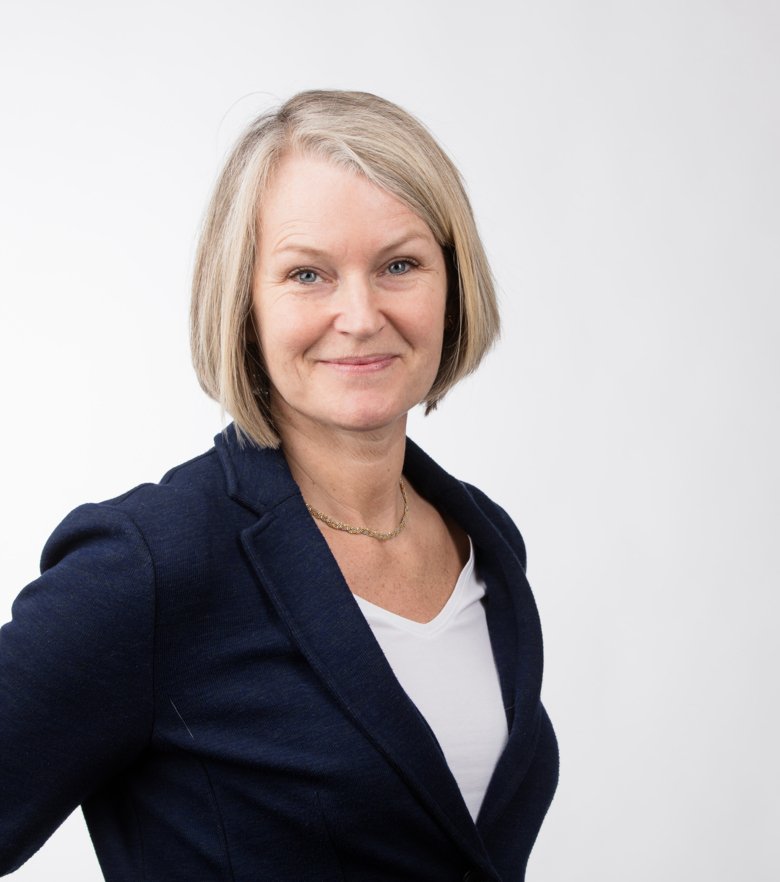Even healthy backs ache
Back pain is so common that it’s considered part of life. Up to 80% of people are estimated to experience low back pain at some point in their lifetime.

Text: Annika Lund, first published in Swedish in the magazine Medicinsk Vetenskap nr 3/2021.
On a global level, back pain is the condition that causes most health issues. At least if you use the YLD measurement – years lived with disability. This is a measurement that compares illnesses based on how much loss of function they cause in a population. In 2018, scientific journal The Lancet published a YLD ranking for around 350 illnesses and injuries on a global level. Low back pain, also known as lumbago, topped the list. In second and third place came headaches and depression.
But despite low back pain being so common, there is a lack of knowledge surrounding it. For example, it’s often hard to explain what causes the pain – in the vast majority of cases, no structural reason can be found for back pain. Only a small proportion of patients have a specific back problem, such as a slipped disk, spinal stenosis, or a fracture caused by osteoporosis. A tiny minority have pain due to a serious condition such as cancer. But the vast majority have what is known as ‘non-specific back pain’ – pain without a specific cause.
The lack of a specific explanation causes frustration in many patients, who think that something that causes so much pain should be caused by something that can be detected by an MRI scan, for example. But this is usually not the case – findings from MRI scans and other imaging technologies can look the same for two patients, one with pain and one without. These images are a poor guide in a diagnostic context. They make it hard to determine what is causing the pain in individual cases – it may be to do with muscles, joints, discs or pain signalling itself. But for the patient, the pain is very real, regardless of what an MRI scan can or cannot show.

“This group needs to be met with understanding and affirmation – back pain is a difficult condition that can affect functionality and quality of life. An important message is that it is extremely rare for back pain to be caused by serious illness and that it’s not dangerous to move around,” says naprapath Eva Skillgate, lecturer in epidemiology at the Institute of Environmental Medicine at Karolinska Institute and professor at Sophiahemmet University.
Acute back pain
Acute lumbago is what is commonly called acute back pain, a very sudden and severe pain that can radiate out towards the groin or buttocks. Lumbago can also be a weak back, fatigue in the back, a feeling of weakness or stiffness. Some people also have sciatica, where the pain radiates down towards the legs.
For most people, the pain is temporary and eases within a couple of weeks. This transient pain can be treated on its own by trying to stay as active and mobile as possible. For example, you can take painkillers to manage a short walk. But if the pain becomes too severe, bedrest may be necessary, even though the recommendation is to try to stay upright.
This is a representative picture of what “back pain” means to many people. Yet many people live with their sore backs in other ways. Some suffer from back pain which constantly comes and goes, where periods of pain and relief of variable duration follow each other. A small group suffer from chronic pain, where the pain is always there but varies in intensity. “Back pain” is a diffuse term that means different things to different people. Talking about back pain as something that affects most people occasionally, much like headaches, can weaken the term to the detriment of those who are suffering,” Eva Skillgate believes.
Divide the concept of back pain
“We need to start talking about back pain in two ways. We should be able to use the expression “back pain” as meaning a normal symptom that many people can treat on their own. But more long-term difficulties, where the pain is no longer only a symptom, should be referred to as “debilitating back pain”. It should be a separate diagnosis which should be taken more seriously,” she says.

Eva Skillgate draws parallels to psychiatry, where “sadness” describes something lesser and more transient than what is implied by the diagnosis of “depression”.
“I think this should be our starting point. If “debilitating back pain” became a separate diagnosis, then I think this group of patients would be given more attention in research than is currently the case. Back pain is not a very popular area of research right now. This is a shame and very strange, as it causes a lot of suffering and gives rise to such high social costs. Long-term, nagging back pain can’t be seen from the outside and many people who live with it are not treated correctly by employers, carers or society in general,” she says.
But even debilitating back pain is very common. According to the 2019 Public Health Report, a periodic report of the public health situation in the Stockholm Region, 8% of people in Stockholm have “severe problems” with pain in their hips or back. This corresponds to almost 190,000 people in Stockholm or, at a national level, just over 830,000 Swedes.
For too many of these people, their back pain began with a first episode of transient back pain.
So – what do we know about the risk factors in this context? Whose transient back pain is at risk of becoming recurrent? And whose bad back is at risk of becoming chronic pain?
Unfortunately, this is not entirely clear. When it comes to risk factors for a first episode of back pain, little is known, Eva Skillgate explains. A very common cause of a first-time case of acute lumbago is carrying or lifting something heavy. But the person concerned may very well have done the same thing many times before without experiencing any pain. Why does one particular heavy lift suddenly make your back lock up? Research lacks answers here.
Risk factors for long-term back pain
More is known about the risks of a person who experiences occasional back pain developing long-term back pain. One of these risk factors is female gender. Others include repeated heavy lifting, as well as having a physically demanding job. Even being exposed to vibrations increases the risk of back pain just as much as working in uncomfortable positions or making twisting motions. However, possibly quite surprisingly, it doesn’t seem to be harmful for the back to sit down for a long time. The important thing is to vary your sitting position.
Lifestyle habits also play a role in the risk of developing long-term back pain.

Eva Skillgate and her colleagues have monitored almost 9,000 people who “occasionally” experienced back pain over a period of four years. They were all asked to describe their health habits in four areas: physical activity, smoking, alcohol and diet, where a diet with a lot of fruit and vegetables was considered healthy. The researchers then calculated the number of healthy habits for each participant in the study.
A follow-up was carried out after four years. Nine percent of women with four healthy habits had experienced chronic back pain. For women with no healthy habits, the corresponding figure was 21%. In this study, the correlation was only seen among women; the reason for this is unclear. It may be due to the fact that the number of men with four healthy habits was low, which gave a less certain result. Other studies have found no differences between the genders as regards the importance of a healthy lifestyle for avoiding long-term back pain. This study did not investigate which habits played a role. However, in other studies, it is primarily smoking and lack of physical activity that stand out as risk factors.
However, Eva Skillgate believes that this type of study only shows one part of the picture, such a small part that the big picture is lost.
“It’s not possible to identify individual, strong risk factors for long-term back pain. A number of interacting factors are required. It’s a complex whole that determines whether or not you develop long-term issues. In order to identify complex links between a number of relatively weak risk factors, we would need to do studies covering several hundred thousand people,” she says.
Psychological factors play a role. Job stress, a big workload, demanding requirements and little opportunity to control your work increases the risk of back pain becoming long-term. Even how you estimate your own work capacity can play a part – believing that you have a low work capacity is linked to a higher risk of back pain that doesn’t go away.
The same applies to those who have high levels of fear linked to their sore back. Fear of movement, where you fear sudden pain or believe that physical activity may be harmful, increases the risk of developing long-term issues. Catastrophic thinking also does this, such as thinking “this is never going to go away”.
Even sleep plays a role. Poor sleep increases the risk of temporary pain becoming chronic back pain.
In short: how you live and otherwise feel, how you see yourself and how you think about your back pain all have a part to play in the prognosis of non-specific back pain. This is in combination with what the back is exposed to in the form of lifting, vibrations and uncomfortable working positions.
Link between back pain and mental illness
A number of the risk factors that are relevant to the development of long-term back pain are also relevant to the development of mental illness. And the trend in back research is to focus more and more on the interaction between these two conditions, explains Eva Skillgate.
“We know that mental health is a risk factor for back pain. But it also works the other way round – back pain is a risk factor for developing mental illness. There is strong support showing that it is important to strengthen the patient’s belief in their own abilities. When it comes to the back, the patient must be confident that their back is holding up and try to continue being active. This doesn’t just mean physically active, but also that the patient must try to stay social, for example by going to work and not isolating themselves at home. This is very important at an early stage, so that more temporary back pain does not become a long-term issue,” says Eva Skillgate.
This is essentially the message given in treatment guidelines for low back pain in a number of countries. According to the National Institute for Health and Care Excellence (NICE), which gives national guidance to healthcare services in the UK, people who experience pain in their low back should mainly get help to deal with the pain themselves. The self-help programme contains information for the patient and support for keeping going as normal, and this includes exercising. According to these guidelines, psychological treatment is good, but only in combination with a physical exercise programme.

No national guidelines have so far been issued for the treatment of non-specific back pain in Sweden. But in many countries, they are similar to those in Great Britain, explains Eva Rasmussen Barr, clinical physiotherapist and researcher at the Department of Neurobiology, Care Sciences and Society.
“The first advice is to always “stay active” – people should continue doing what they normally do. Exercise is an important part of this. You should be as physically active as you can manage,” she says.
One of the aims of exercise is to strengthen the muscles around the back and torso and in doing so make your back stronger.
There doesn’t seem to be a difference in the effectiveness of different forms of exercise. This is shown in an article describing the knowledge basis, written by Eva Rasmussen Barr and her colleagues. Conditioning, core, strength, Pilates, tai chi, walks, water sports, yoga or other exercise – it’s all just as effective when it comes to reducing pain and limiting the functional impact on those with low back pain.
“This means that we can recommend that patients choose their exercise freely based on what feels fun or achievable,” says Eva Rasmussen Barr.
Those who have been in pain for a month have a relatively good prognosis. But after three to four months of pain, the risk of the pain becoming long-term increases.
To seek help
The early days are therefore important. But it’s not really known how Swedish people behave when they first experience back pain. What we do know is that most people don’t seek help until they have lost some function – they’ve found it difficult to lift their children up or play golf.
The initial healthcare contact is usually with a doctor, a physiotherapist, a naprapath or a chiropractor. All of these now have professional licences issued by the National Board of Health and Welfare.
Out-of-pocket payments apply at doctors and physiotherapists, which vary in cost between different regions. You do not need a referral to book an appointment with a physiotherapist in any region.
Public healthcare services are less well-equipped to deal with those who want to see a naprapath or chiropractor. Some regions have an agreement with naprapaths and/or chiropractors, but the patient normally pays the full price out of their own pocket. These visits are therefore normally more expensive than a visit to the doctor or physiotherapist. But who seeks care from what profession or how patients move between them is not known.
Eva Rasmussen Barr believes that this is a shame because this is where the back pain journey starts for many patients. Healthcare professionals have a great responsibility – in this first line of care, patients must get a proper assessment to ensure that they are referred in the right direction.

An important part of the assessment is medical history, another is the clinical assessment. How does the patient move? How is the soreness, strength and stiffness of their muscles? How do their reflexes and sensations work on their skin, are there any neurological abnormalities? A clinical assessment identifies those who need to see a doctor for further examination, where a specific back problem may be detected.
A self-assessment questionnaire may also be included in this assessment. A number of different questionnaires are used. They can for example measure depression, level of physical activity, fear of movement, confidence in own abilities or quality of life. There are a lot of these measurement tools available, and many measure aspects that are known risk factors for temporary back pain becoming long-term.
Eva Rasmussen Barr has studied what just over 1,200 Swedish physiotherapists who all worked in primary care did in their everyday clinical practice when assessing their patients’ needs.
Nearly 100% “always or often” took neurological status and looked at posture. A number of clinical investigations were “always or often” performed by over 60% of the physiotherapists.
But most self-assessment questionnaires are used “rarely or never” by 85%. The VAS scale was used most often for pain, which three out of four used “always or often”.
Eva Rasmussen Barr does not believe this is good enough. For several reasons. In addition to the fact that it is important to identify risk factors for long-term pain, the questionnaire is needed in order to prove the effectiveness of the treatment, she believes.
In a recently published survey, she and her colleagues asked a small group of physiotherapists about why they chose not to use self-assessment questionnaires. Several reasons were identified. These included a lack of time and uncertainty surrounding how they should be used.
“It’s a shame, because I think there would be a lot to gain from using these tools more. My theory is that if you use them at the start of treatment, you can see what weaknesses a patient has and then only target them. And if you then use the same form at the end of the treatment, that will give the patient proof their improvement. But the form is also important for our profession. If we want to show that physiotherapy is effective, then we need to start measuring more,” Eva Rasmussen Barr says.
Efficiency of physiotherapy
So - how effective is physiotherapy when it comes to preventing long-term back pain? And how does physiotherapy differ from naprapathy and chiropractic?
In simple terms, chiropractic is clearly directed at joints, while naprapathy has a simultaneous focus on soft tissue. Physiotherapists usually promote exercise.
Key elements in naprapathy and chiropractic are so-called manual treatments, where the patient is treated with a very hands-on approach. Massage is part of this. There are various ways to pull and stretch joints and muscles to get them to release or relax.
However, some physiotherapists also do manual treatments. Their version is known as orthopaedic manual therapy (OMT).
Naprapaths and chiropractors also give advice about exercise. They also give tips on exercises to strengthen or relax certain parts of the body.
All professions provide information about back pain, and they all give an assessment of the patient’s problems and identify what should be examined further by a doctor, such as suspected rheumatic disorders or something which would benefit from surgery. In practice, all three professions do similar things, albeit with slightly different approaches.
In 2016, a report from the Swedish Agency for Health Technology Assessment and Assessment of Social Services (SBU) was published. It compared treatments that are usually given by physiotherapists, naprapaths and chiropractors based on how effectively they prevent ongoing pain from becoming long term.
The report did not identify any treatment form as being better than any other. The underlying data at the time was too limited, but no treatment form was condemned as being ineffective – it was not possible to assess them at all, according to the SBU.

The report is now five years old. Researchers at Karolinska Institutet have summed up the current research situation as follows: treatments by physiotherapists, naprapaths and chiropractors do have an effect, but there are no miracle cures, to either ease ongoing pain or prevent long-term pain.
Iben Axén, clinical chiropractor and researcher at the Institute of Environmental Medicine at Karolinska Institute sees the importance of several different professions providing similar treatments. It gives a choice, where some might prefer one profession – or an individual practitioner – over another. And it may be important to be able to go to the one you believe, think or have heard is “really good”, maybe because you’ve had a previous positive experience with that person.
“Expectations are an important part of the outcome of a treatment. If you think that only a chiropractor can help you, then there is a greater likelihood that you will feel helped when you’ve seen a chiropractor,” says Iben Axén.
A study by her research group included nearly 600 people who saw a chiropractor for their low back pain. Before the treatment, they were all asked to estimate, on a ten-point scale, how likely they thought it was that their back pain would improve. After four visits, the patients had to describe how great an improvement they had experienced.
Among those who had had high expectations (estimates between five and ten), nearly 75% stated that they had experienced “definite improvement”. But among those with low expectations (between zero and five), just under 50% described such improvement. Expectations played a greater role in the outcome than the pain intensity, self-assessed health and the patient’s psychological profile, according to this study.
“You can definitely say that there are things beyond our control, such as someone hearing from their neighbour that a certain chiropractor is really good, which can affect how well the treatment works for that person. This is difficult when you’re investigating effect in studies,” says Iben Axén.
The vast majority of people who seek care for low back pain never get any explanation as to what is causing their pain. But a minority get a specific diagnosis, with vertebral compression fractures, spinal stenosis and slipped discs being the most common.
Vertebral compression fractures are fractures in the spine, often as a result of osteoporosis. The patient is usually not operated on and instead receives bone-strengthening treatment and pain relief.
Spinal stenosis is the result of deposits in the spine putting pressure on the nerves in the spinal canal. This can be treated surgically, where space is created for the nerves again. This is the most common surgical intervention in the lumbar spine. The next most common is performed on slipped discs.
However, most slipped discs do not need to be operated on. Only around 5% of all slipped discs are treated surgically.

“We take a cautious approach in Sweden, because slipped discs usually heal by themselves. We’ve set a limit where we wait one and a half to two months before we suggest surgery. Symptoms are relieved more quickly if you operate instead of waiting for healing, but the operation plays no role in the long-term prognosis,” says Paul Gerdhem, back surgeon and adjunct professor in orthopaedics at the Department of Clinical Science, Intervention and Technology at Karolinska Institute.
However, nearly 8% of back surgeries carried out in 2019 concern segmental back pain – pain in one section or segment of the back. It’s a less clear diagnosis, which is also known as degenerative disc disease (DDD). The patient is experiencing back pain – and one or more discs between vertebrae have aged, which enables the vertebrae to rest against each other or move sideways.
However, many people have aged discs without being in pain. It is therefore difficult to explain the pain based on this finding.
“The big worry is that there is no objective investigation that can tell what is causing the pain,” says Paul Gerdhem.
The most common surgical intervention for this group is arthrodesis, where two or more vertebrae are fused together.
“We only operate on people who have tried all other treatment options and still not been cured,” says Paul Gerdhem.
After five years, three in four people are satisfied according to the quality register SWESPINE. Many people experience an improvement in their functional ability – before the intervention, only half could walk more than a kilometre; after five years, eight out of ten could do so. Pain levels also decrease, while the consumption of painkillers goes down after the procedure.
“There are different views in different countries on performing arthrodesis on patients with non-specific back pain. I think it could be valuable to return to the issue by conducting a new study,” he says.
Text: Annika Lund, first published in Swedish in the magazine Medicinsk Vetenskap nr 3/2021.

The magazine Medical Science
The magazine Medical Science (Medicinsk Vetenskap) is published by Karolinska Institutet and targets the general public interested in medical science.
